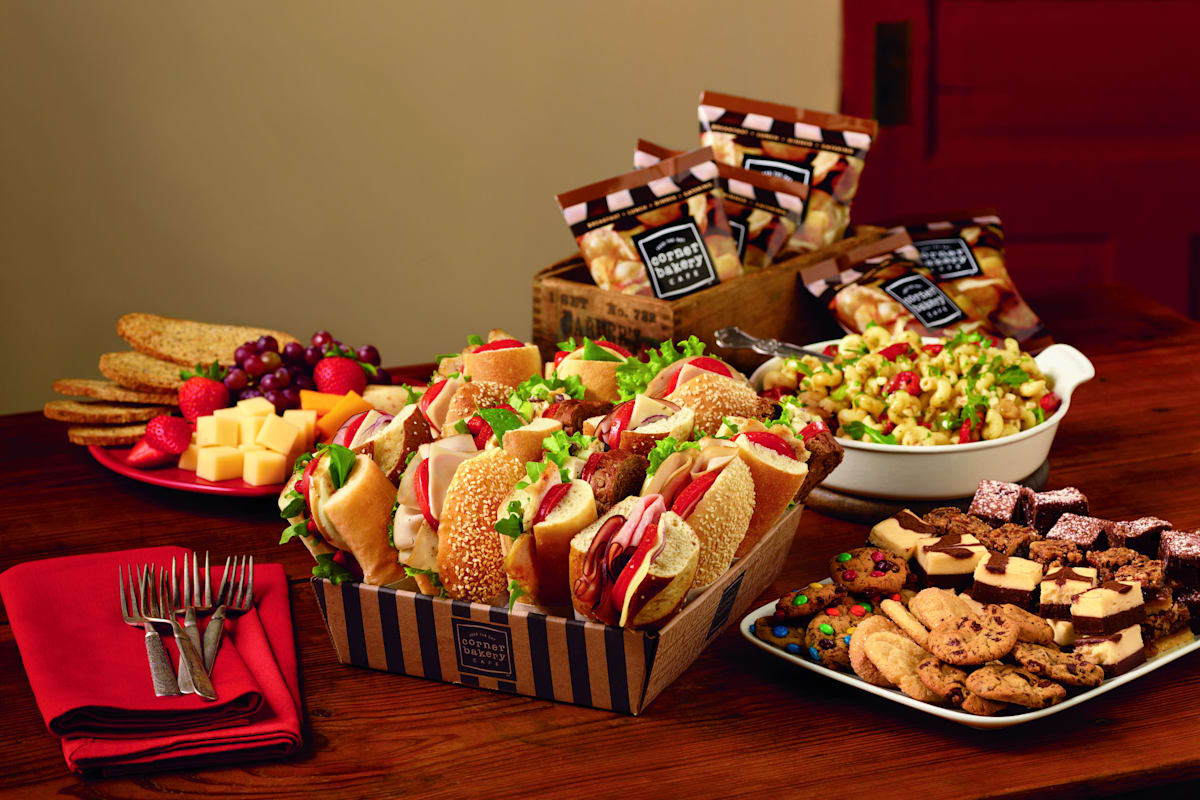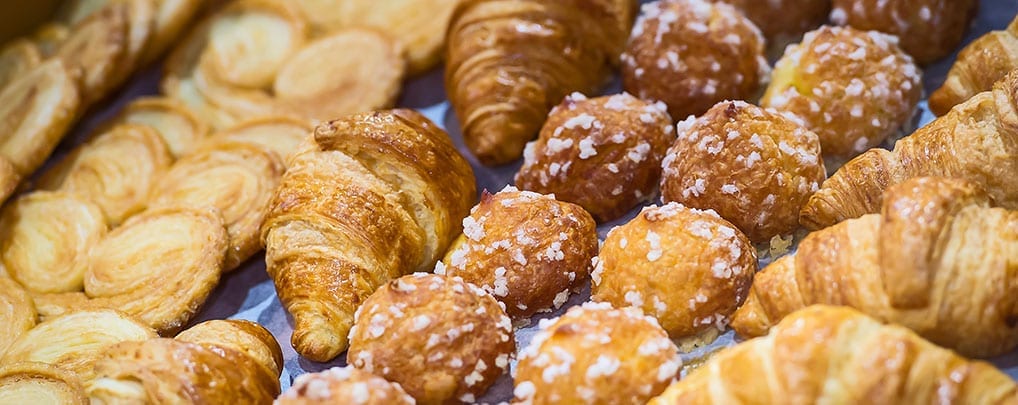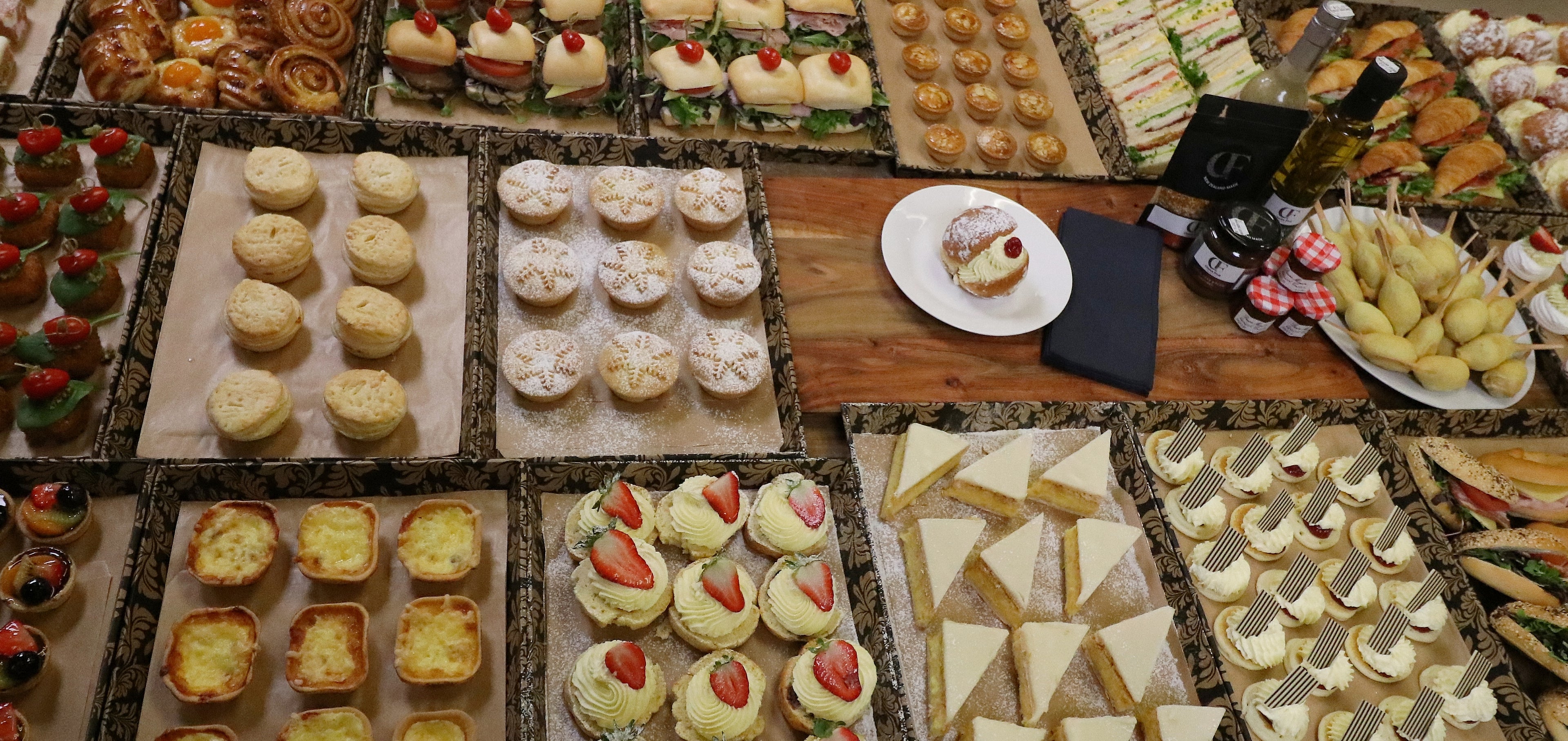How to Pick the most effective Catering Maddington for Your Requirements
Comprehending the Art of Bakeshop Products: From Freshly Baked Breads to Alluring Pastries and Finger Foods
From the scientific research behind the excellent loaf of bread, where fermentation and gluten growth play crucial functions, to the finesse required for creating layered pastries, each facet discloses an engaging narrative of craftsmanship. The versatility of finger foods highlights exactly how flavor and texture can be artfully incorporated to engage diverse preference choices.
The Science of Bread Making
At the heart of every loaf of bread lies a remarkable interplay of chemistry and biology. The process of bread making starts with the combination of flour, water, yeast, and salt-- each ingredient playing a critical role in the last item.
Yeast, a living organism, ferments the sugars present in the flour, creating co2 and alcohol at the same time. The carbon dioxide gas produces bubbles in the dough, creating it to rise and establish a light appearance. The temperature level and humidity during fermentation substantially affect yeast activity and, consequently, the bread's taste and appearance.

Learning Bread Techniques
Exactly how can one achieve the fragile balance of appearance and taste that defines remarkable bread? Mastering bread techniques needs a deep understanding of ingredients, techniques, and the scientific research behind them. Essential to this craft is the option of top notch ingredients-- flour, butter, sugar, and eggs-- each playing a crucial function in the last product's flavor and appearance.
The technique of lamination, which includes folding layers of dough and butter, develops the desired flakiness in breads like croissants and smoke pastry. Accuracy in temperature level is vital, as butter must continue to be cold to make sure optimum layers. Similarly, appropriate blending methods, such as the creaming method for cakes, make sure also incorporation of air and fat, leading to a light and ventilated crumb.
Additionally, keeping the appropriate humidity levels during cooking can substantially influence the outcome, guaranteeing that breads increase appropriately and attain that golden-brown coating. The art of bread additionally requires perseverance and technique; each effort boosts one's ability and understanding of the complex equilibrium needed to produce irresistible pastries that delight the detects. Proficiency in these strategies eventually differentiates a knowledgeable bread cook from an amateur.
Sorts Of Finger Foods
The world of cooking thrills prolongs beyond breads to include a large range of finger foods, which are celebrated for their convenience and versatility. These bite-sized deals with are best for celebrations, supplying a selection of flavors and appearances that accommodate varied tastes.

On the sweeter side, tiny tarts and bite-sized cupcakes supply a wonderful coating to any kind of meal, interesting those with a craving for sweets. Cheese and charcuterie boards serve as an innovative choice, enabling guests to customize their bites with a selection of meats, nuts, cheeses, and fruits.
Taste Profiles in Cooking
Cooking is a complex dance of taste accounts that integrates wonderful, mouthwatering, and umami notes to produce a harmonious experience for the palate. Understanding these accounts is essential for bakers looking for to boost their developments.
Sweet taste commonly functions as the foundation in baked goods, with sugars, fruits, and all-natural sugar improving flavor deepness. Components such as chocolate and caramel present complicated wonderful notes that can either dominate or complement various other flavors. Conversely, full-flavored components, typically found in breads and pastries, supply balance and comparison. Components like cheeses, flavors, and herbs can change a basic dough into a complex flavor experience.
Umami, frequently ignored in cooking, plays a considerable duty in enriching tastes. Active ingredients such as aged cheeses, fermented products, or perhaps certain nuts contribute to a full-flavored depth that improves total taste.
Furthermore, the interaction of acidity from components like buttermilk or citrus enthusiasm can lighten up flavors, providing a revitalizing counterpoint to sweetness. By thoughtfully integrating these taste profiles, bakers can craft products that resonate with varied tastes, creating an unforgettable culinary experience. Eventually, understanding flavor profiles is essential to technology on the planet of baking.
Necessary Cooking Devices and Ingredients
Understanding flavor profiles in baking sets the phase for picking the right devices and active ingredients that facilitate the creation of extraordinary baked products. The structure of effective cooking depend on having crucial devices available. Trick items include blending bowls, gauging mugs, and spoons for precision, along with a tough stand mixer or hand mixer for easy mixing. A dependable set of baking pans-- have a peek at these guys such as sheet pans, loaf pans, and cake pans-- is essential for attaining wanted appearances and shapes.
In terms of active ingredients, top quality matters significantly. Flour works as the backbone of most dishes; selecting the right type-- be it bread, all-purpose, or bread flour-- can drastically affect the result. Sugar not only sweetens but also adds to texture, while eggs function as binders and leavening representatives. Baking powder and baking soft drink are crucial for producing lift in cakes and breads.
In addition, including flavor enhancers like vanilla remove, seasonings, and citrus passion can boost your productions. By ensuring access to these fundamental tools and components, bakers can confidently start their culinary trip, crafting a diverse array of wonderful baked goods.
Verdict
Mastery in bread making, pastry preparation, and finger food discussion exposes the intricate relationships between active ingredients and procedures. Bakery Catering Maddington. Exploring varied flavor profiles enriches the baking experience, while important tools and active ingredients give the foundation for success.
How can one accomplish the fragile equilibrium of texture and taste that specifies phenomenal pastry? Basic to this craft is the choice of top notch ingredients-- flour, butter, sugar, and eggs-- each playing a vital function in the final item's taste and structure.

Understanding taste profiles in cooking collections the phase for picking the right devices and components that assist in the creation of extraordinary baked items. Exploring varied taste accounts improves the baking experience, while essential devices and ingredients give the foundation for success.